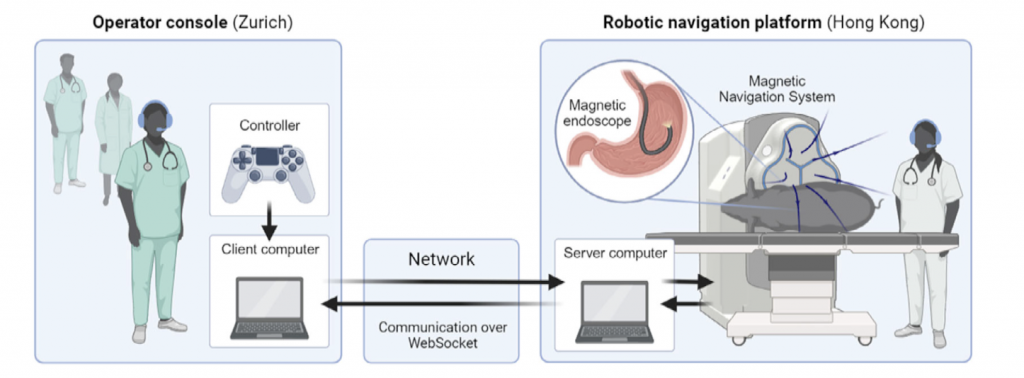Remote surgery, also known as telesurgery, is increasingly becoming a reality due to the emergence of digital technologies. A recent pilot project has highlighted new possibilities, in which surgeons based in Switzerland conducted the world’s first remote tele-endoscopy on a pig (Mesot et al., 2024, 1). In this post, I would like to quickly explore this innovative technology as well as dive into the benefits and challenges.

As with most industries, digital disruption has redefined the boundaries of healthcare. Technologies that leverage AI and robotics, such as teleoperated magnetic endoscopy (the technology used to conduct the world’s first tele-endoscopy), are excellent examples of how digital platforms enable remote procedures. These technologies empower surgeons to perform operations without being physically present. This can be particularly useful in various situations, such as time-sensitive procedures or specialized surgeries where local expertise is unavailable. Moreover, this revolutionary technology could also serve as a useful platform to train local operators. (Mesot et al., 2024, 4–5)
Nevertheless, although this sounds very promising, there are a few challenges to keep in mind. The case study of the first tele-endoscopy, for example, highlighted the importance of a fast and reliable internet connection with low latency (Marescaux et al., 2002; Mesot et al., 2024, 2). Furthermore, it emphasized the need for the right equipment to allow remote surgery without introducing additional risks to the patient, which would not be present in a local surgery. Additionally, a robust communication platform between the remote surgeon and the local support operators is of crucial importance (Mesot et al., 2024, 4–5).
As digital technologies continue to improve and medical procedures gradually incorporate more modern innovations, it is increasingly safe to say that remote operations, as seen in the pilot project, are becoming a reality. It remains to be seen if, in the future, robotic surgeries will become commonplace.
Sources:
Marescaux, J., Leroy, J., Rubino, F., Smith, M., Vix, M., Simone, M., & Mutter, D. (2002). Transcontinental robot-assisted remote telesurgery: feasibility and potential applications. Annals of surgery, 235(4), 487–492. https://doi.org/10.1097/00000658-200204000-00005
Mesot, A., Mattille, M., Boehler, Q., Schmid, N., Lyttle, S., Heemeyer, F., Chan, S.M., Chiu, P.W.Y. and Nelson, B.J. (2024), Teleoperated Magnetic Endoscopy: A Case Study and Perspective. Adv. Intell. Syst. 2400522. https://doi.org/10.1002/aisy.202400522

